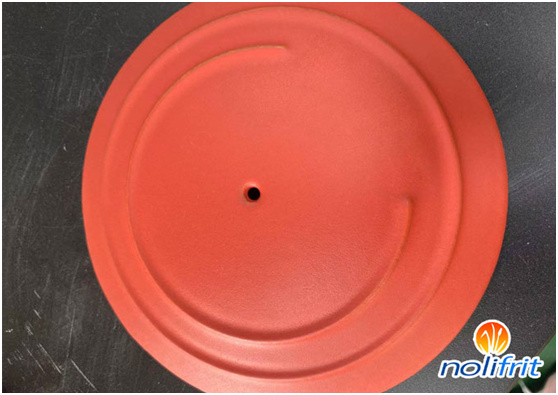Dry-Dry Method 2 Enameling and1 Firing Process
Compared with the past three-enameling-two-firing and two-enameling-two-firing processes, the development of the enamel two-enameling and one-firing process can save energy (one enameling can replace two times), reduce costs, and automate production. Today, I would like to introduce the dry-dry process in the two enamel and one sintering system.

Dry method - The dry method is to apply the dry powder of the ground coat containing the adhesive agent on the surface of the bottom body by electrostatic spraying, and then spray the powder cover coat without drying.
The advantages of the dry method-dry method of two enameling and one firing process are:
1. Suitable for mass production of plate products with limited concentrated colors (such as white enamel or apricot enamel);
2. A highly automated clean application system without any enamel waste can be used;
3. Save energy without drying;
4. The enameling pressure is low, and the surface of the cover coat is smooth (the surface of the cover coat can be disturbed by the electrostatic influence between the bottom and the ground coat).
The disadvantages of the dry-dry two-bore and one-fire process are:
1. It is not suitable for enamel products with complex structural design, which may cause interpenetration of the ground coat in the Faraday cage shielding effect area. (There used to be a series of problems such as insufficient enameling caused by the complex structure of enamel products. Later, our technicians made up for the defects of dry enameling through wet methods. For details, please refer to "Nolifrit Technical Services: Wet Enamel Solving Enamel Defects of oven dry enamel");
2. The choice of enamel color is limited;
3. Both sides of enamel products are enameled, which may cause surface defects, such as the cover plate of dining utensils;
4. The investment cost is high, because in addition to the enameling device, the sea needs an air conditioning system with constant temperature and humidity, otherwise the quality of enameling will be defective due to changes in temperature and humidity;
5. When non-zero carbon steel is used, the quality of surface enamel will be reduced;
6. The thickness of the ground coat coating is very strict and must be precisely controlled at 30~40μm, otherwise interpenetration with the cover coat may occur;
7. In order to minimize the electrostatic effect between the bottom and cover coat layers, the cover coat should be sprayed with a low voltage spray gun.